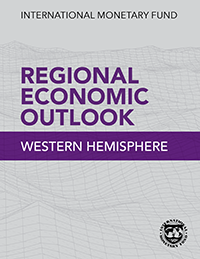Barbados: At a Glance
- Current IMF membership: 191 countries
- Barbados joined the Fund on December 29, 1970
- Quota: SDR 94.5 million (0.02 percent of total)
- Number of arrangements since membership: 3
- Outstanding Purchases and Loans (SDR): 206 million (September 24, 2020)
- Latest Article IV/Country Report: December 18, 2019
- Current IMF arrangement: Latest Report: June 8, 2020
Office Activities
What we do
Opened in 2019, the IMF office in Barbados is a central point of contact between with the IMF and the Government of Barbados with a primary focus to support the implementation of Barbados’ Economic Reform and Transformation (BERT) priorities set forth in the Fund’s Extended Arrangement under the Extended Fund Facility (EFF) for Barbados. In that capacity, the office follows economic developments and policies in Barbados, liaises between the Barbadian authorities and IMF staff in Washington, and coordinates IMF technical assistance. It is also a source of information about IMF views for the public, local and foreign analysts, investors, academic and research institutions, and Barbados’ international partners and their diplomatic missions.
IMF's Work on Barbados
-
Barbados: Technical Assistance Report-Stress Testing
April 4, 2025
Series:Technical Assistance Report No. 2025/034
-
April 4, 2025
Author/Editor:Petr Jakubik | Adam Gersl
Series:High Level Summary Technical Assistance Report No. 2025/012 -
IMF Staff Concludes Visit to Barbados
February 28, 2025
An International Monetary Fund (IMF) team led by Michael Perks visited Bridgetown between February 25-28, 2025 to review recent economic developments and reform efforts and prepare the ground for the fifth and final reviews of the Extended Fund Facility (EFF) / Resilience and Sustainability Facility (RSF) programs
-
Barbados: Public Investment Management Assessment - PIMA and Climate PIMA
December 27, 2024
Author/Editor:Lesley Fisher | Taz Chaponda | Chloe Hyungsun | Willie Du Preez | Guohua Huang | Gemma Preston
Series:High Level Summary Technical Assistance Report No. 2024/051 -
December 23, 2024
Series:Country Report No. 2024/368
Regional Economic Outlook

Western Hemisphere
Regional Economic Outlook
October 2024After successfully weathering a series of shocks, most countries in the region are converging to their (tepid) potential. Growth is expected to moderate in late 2024 and 2025 while inflation is projected to continue easing, although gradually.
With output and inflation gaps mostly closed but monetary policy still contractionary and public finances in need of strengthening, a further rebalancing of the policy mix is necessary. Fiscal consolidation should advance without delay to rebuild buffers while protecting priority public investment and social spending. This would support the normalization of monetary policy and strengthen credibility and resilience of policy frameworks.
Most central banks are well placed to proceed with monetary easing, striking a balance between fending off the risk of reemerging price pressures and avoiding an undue economic contraction.
Medium-term growth is expected to remain close to its low historical average, reflecting long-standing, unresolved challenges—including low investment and productivity growth—and shifting demographics. Worrisomely, the ongoing reform agenda is noticeably thin and could lead to a vicious circle of low growth, social discontent, and populist policies. Avoiding this requires pressing on with reforms. Improving governance—by strengthening the rule of law, enhancing government effectiveness, and tackling crime—is a priority that cuts across all areas of growth. Boosting capital accumulation requires improving the business environment, fostering competition, and increasing international trade. Greater and more effective public investment is also needed. Maintaining a dynamic labor force and increasing productivity requires tackling informality and making formal labor markets more flexible, including to adapt to new technologies. Increasing female labor participation can help boost the labor force and offset demographic shifts.
Read more: Regional Economic Outlook for the Western Hemisphere, October 2024



